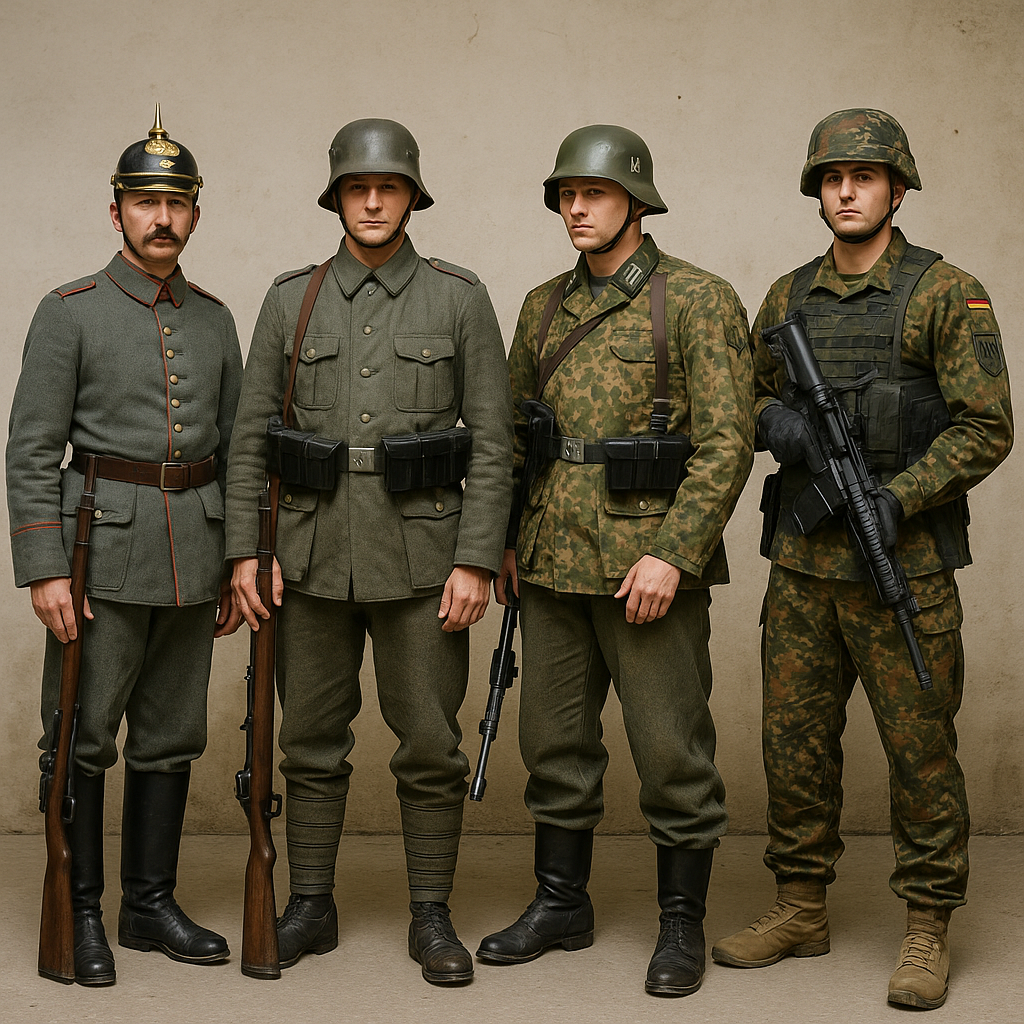
World War 1 German Uniforms to Reproduction WW2 Gear: A Complete Guide for History Buffs
Published on Sep 20, 2025
Introduction:
Did you know that the iconic spiked helmet of the German WW1 soldier was phased out mid-war? It’s a surprising fact that reveals how practical needs and battlefield conditions quickly shaped military fashion.
For history lovers, collectors, or WW1/WW2 reenactors, German military uniforms are more than just cloth and thread — they’re windows into a complex era. Whether you're researching for accuracy, planning to buy a German WW1 costume, or starting a collection of reproduction WW2 German uniforms, this guide has everything you need.
Understanding World War 1 German Uniforms (Intents: Informational 50%, Commercial 50% world war 1 german uniforms)
The Backbone of the Imperial German Army
German soldiers in World War 1 were typically outfitted in feldgrau (field gray) wool uniforms, a departure from the vibrant colors of 19th-century military attire. The goal? Camouflage and practicality in trench warfare.
Key components of a WW1 German uniform:
- Pickelhaube: The iconic spiked leather helmet, later replaced by the Stahlhelm in 1916
- Tunic (Bluse): Wool, feldgrau color, with red piping early in the war
- Trousers: Matching feldgrau with reinforced seat
- Boots: Jackboots or ankle boots with gaiters
- Gear: Bread bag, canteen, bayonet, and shovel
Reenactor Tips: Getting It Right
If you're a reenactor or hobbyist looking for a german uniform ww1 reproduction:
- Choose the right era: Early WW1 uniforms differ dramatically from late-war gear.
- Look for accurate materials: Wool, real leather, and metal (not plastic) fittings make a difference.
- Don’t overlook insignia: Shoulder boards, collar tabs, and buttons indicate unit, rank, and regiment.
Modern Collecting: From Authentic Pieces to Reproductions
Reproduction WW2 German Uniforms (Intents: Informational 73%, Commercial 27%)
Modern collectors and reenactors are turning more to reproduction WW2 German uniforms, due to the rarity and cost of originals. Fortunately, today's reproductions are incredibly detailed.
Actionable Steps for Buying Reproductions:
- Research before you buy: Know the exact unit and year you want to portray.
- Buy from reputable vendors: Avoid marketplaces like eBay unless you trust the seller.
- Compare product photos to originals: Buttons, stitching, and insignia should match wartime photos.
- Start small: Begin with a basic infantry uniform before adding specialist gear (e.g., paratrooper smocks).
Top Reproduction Sellers in 2025:
- Hessen Antique (USA)
- Epic Militaria (UK)
- At The Front (US-based, high-quality reproductions)
Common Pitfalls to Avoid When Buying German WW1 or WW2 Uniforms
Many beginners rush into collecting or reenacting without understanding the nuance and potential mistakes. Here are some pitfalls to avoid:
1. Confusing WW1 with WW2 Uniforms
- WW1 tunics were typically simpler and lacked camouflage patterns.
- WW2 uniforms introduced splinter camo, smocks, and different field gear.
2. Buying "Too Good to Be True" Originals
- Many so-called "originals" are post-war fakes or reissues.
- Always ask for provenance or get a second opinion from forums like Wehrmacht Awards or WW1talk.
3. Not Considering Fit and Sizing
- Historical uniforms fit differently from modern clothing.
- Reproductions often use European sizing—double-check charts before ordering.
4. Ignoring Accessories
- A uniform isn’t complete without proper gear and webbing.
- Think canteens, bayonets, ammo pouches, and helmets.
Current Trends in the German Military Uniform Collecting World
1. Hybrid Uniform Sets
Some reenactors now mix WW1 and WW2 elements for artistic or alternate history portrayals (though this is not historically accurate).
2. Modern German Soldier Uniform Comparisons
There’s growing interest in comparing modern German soldier uniforms (Bundeswehr) to historical gear for educational purposes.
3. AI-Based Authenticity Checking
Apps and AI tools are now being used to detect fakes in online marketplaces. Snap a photo of your suspected reproduction and get an authenticity score.
Reenactment & Display: Bringing Uniforms to Life
Wearing these uniforms respectfully and accurately keeps history alive. Whether you're:
- Marching in a battle reenactment
- Hosting a school event
- Creating a WW1 German soldier display
- Shooting a historical film
…it’s essential to focus on respect, accuracy, and education.
Actionable Tips:
- Keep things authentic but not obsessive; perfection isn’t always necessary for engagement.
- Educate your audience—share facts about the soldier you’re portraying.
- Clean and maintain your uniforms to extend their life. Use wool-safe detergents and store them in breathable containers.
Where to Buy German WW1 Costumes and Reproduction WW2 German Uniforms
Here are reliable sources categorized by use:
For Collectors:
- Original Militaria (Spain)
- Regimentals (UK)
- The Collector's Guild (USA/Canada)
For Reenactors:
- Sofmilitary.co.uk
- Hessen Antique
- WW2Soldier.com
For Casual Use or Costume Parties:
- Museum Replicas
- Amazon (with caution!)
- Etsy (for handmade, custom sizes)
Conclusion: Start Your Journey with World War 1 German Uniforms (Intents: Informational 50%, Commercial 50% world war 1 german uniforms)
Exploring World War 1 German uniforms opens a gateway into understanding global history, craftsmanship, and the lives of soldiers in the trenches. Whether you're looking for a german ww1 costume, researching for a film project, or building your collection of reproduction WW2 German uniforms, remember:
✅ Research first
✅ Buy smart
✅ Respect the history behind the cloth
Ready to dive into the world of military history? Start with a uniform — and step into the past.
